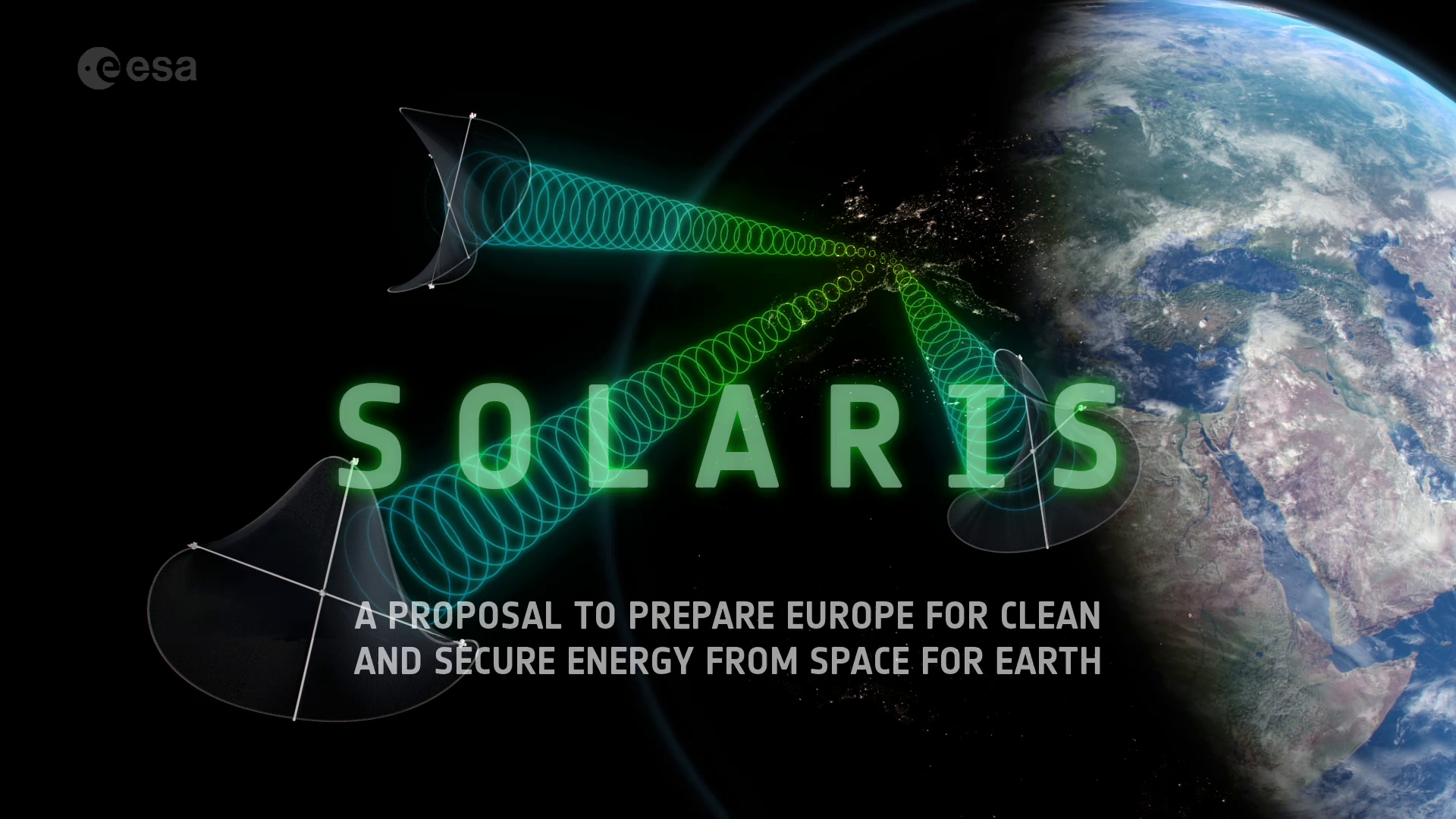16.04.2024

ESA is laying the groundwork for the development of satellite technology designed to harvest the Sun's energy in space before transmitting it wirelessly to receiving stations on Earth.
The initiative, named SOLARIS, raises the tantalising prospect of clean, scalable energy beamed down continuously from orbit to back up weather-dependent renewables and eliminate reliance on fossil fuels.
Through SOLARIS, ESA is bringing together policymakers, energy suppliers and space companies to investigate the feasibility of developing and implementing space-based solar power. This is intended to enable Europe to make an informed decision by the end of 2025 on proceeding with a development programme dedicated to the technology.
Humanity’s energy problem
The energy industry – particularly coal, oil and gas – is a strong contributor to the climate crisis. In an effort to mitigate these impacts, Europe is advancing a transition to renewable power sources with the aim of reaching carbon neutrality by 2050.
Sanjay Vijendran, ESA’s lead for the SOLARIS initiative, says, “Net zero presents many challenges, including the fluctuating outputs of current renewables like wind and ground-based solar farms.
“Looking beyond 2050, the energy requirements of developing nations are expected to rise significantly. This, coupled with intensifying climate impacts, means the need for renewable and reliable sources of power, that can also be scaled up sufficiently, will become ever more pressing.”
Given the uninterrupted nature and scalable potential of space-based solar power, the technology could offer a solution to these current and future energy challenges.
The idea is to collect solar energy in space, where it is continuously available and unaffected by cloud cover or other atmospheric conditions. It is then transmitted wirelessly down to strategically placed receivers connected to the energy grid.


Access the video
Defining the concept
In 2023 a SOLARIS study led by Thales Alania Space Italy, with contributions from renewable energy company ENEL, began to draw up an early definition of a space-based solar power system that uses radio waves to deliver a reliable 24/7 supply of energy to the ground.

Sanjay, who will present SOLARIS this week at the International Conference on Energy from Space in London, explains, “The physics behind this design is already implemented in telecommunications, where satellites beam small amounts of energy in the form of radio-frequency waves from orbit to a receiving ground station.
“The difference with space-based solar power is that the amount of energy transmitted and successfully collected would need to be far larger to make the venture viable – this presents many technological hurdles to be overcome.”
A further SOLARIS study – led by consultancy Arthur D Little in collaboration with energy supplier ENGIE – is investigating a secondary concept that could serve as a forerunner to radio-frequency solar power satellites.
This type of system uses large mirrors deployed in space to reflect sunlight down through the atmosphere to existing terrestrial solar farms, boosting their yields and enabling them to continue producing energy even at times when natural light levels are low.

The reflector design poses fewer technical challenges than the radio-frequency concept, meaning that it could be implemented earlier to test technologies that are eventually used in radio-frequency solar power constellations.
Future work will address the challenges of space-based solar power, several of which are related to the anticipated scale of both the solar farms in space and the receiving stations on the ground.
With solar power constellations expected to measure hundreds of metres or even kilometres across, engineers will need to find ways to assemble, maintain and operate these systems, whilst mitigating risks posed by orbital debris and space weather.
Sanjay adds, “The challenges associated with space-based solar power are looking more surmountable than ever, thanks to low-cost reuseable launch systems, and advances in robotics, in-orbit servicing technologies and wireless power transmission.”
New opportunities
Alongside the system concept studies, SOLARIS is enabling science and technology development that will be integral to future space-based solar power infrastructure. The findings from this work could also be useful for many other space-based and terrestrial applications.
ESA, with dedicated funding from the UK Space Agency, recently invited British companies to develop robotics systems that could be used for the assembly, maintenance or operation of solar farms in space.

ESA will also work with academic partners on a series of science studies to investigate import research questions, including how radio waves used in space-based solar power will behave in Earth’s atmosphere, and how they could impact human health and natural ecosystems.
A further aim of SOLARIS is to bring together the space industry, energy companies, and governments to explore the enormous potential of solar power satellite technology in their collective push towards decarbonising society in the next decades.
This effort will be on show this week at the International Conference on Energy from Space, which is set to welcome key figures from the UK government and the energy industry to discuss SOLARIS and other related activities in the UK, Europe and beyond.
Sanjay concludes, “The threat of the climate of crisis demands that we work together to explore alternative technologies to achieve carbon neutrality – and, if implemented, space-based solar power could play an integral role in addressing this energy challenge, beginning as early as the 2030s.”
Quelle: ESA
